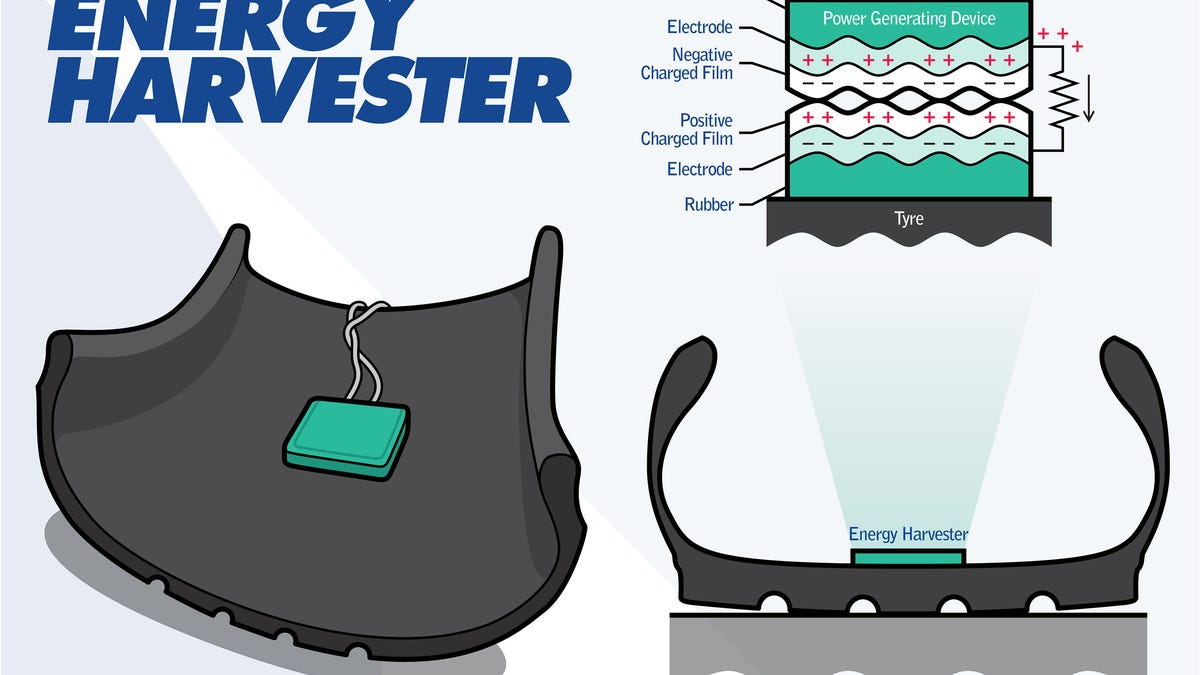Tire company Sumitomo developed a way to generate electricity inside tires
Don't expect it to give your EV appreciable range, though.
If you've ever wondered how your tire pressure continues to power itself, there's no magic kinetic witchcraft happening in your tires -- they just have batteries and strive to use as little power as possible. But in the future, swapping out a depleted tire-pressure sensor may become a thing of the past.
Falken Tires announced last week that its parent company, Sumitomo, has developed a clever "energy harvester" that can produce power from frictional charging, best known as static electricity. It's not quite ready for prime time yet, but it just cleared a big hurdle that could bring its benefits to automobiles at some point in the future.
Inside Sumitomo's energy harvester are two layers of rubber. Each is covered with an electrode and a film. As the tire rolls and deforms, the negatively charged film will interact with the positively charged film on the other side. This generates a small bit of electricity that can go on to power... something.
I say "something" because these harvesters won't be creating enough energy to add miles of range to your EV. Instead, it'll be used to provide a trickle of power to a system that only needs that much. Tire pressure monitors are a perfect candidate, as they're already inside the tire and only need a little bit of juice. Sumitomo says that other devices can also benefit, but didn't dive into specifics.
These little harvesters won't be in your next set of tires, but things are moving along. The Japan Science and Technology Agency recently selected the project for additional research, which means Sumitomo will have some help with its R&D. Let's just hope the harvesters don't cost an arm and a leg each.


